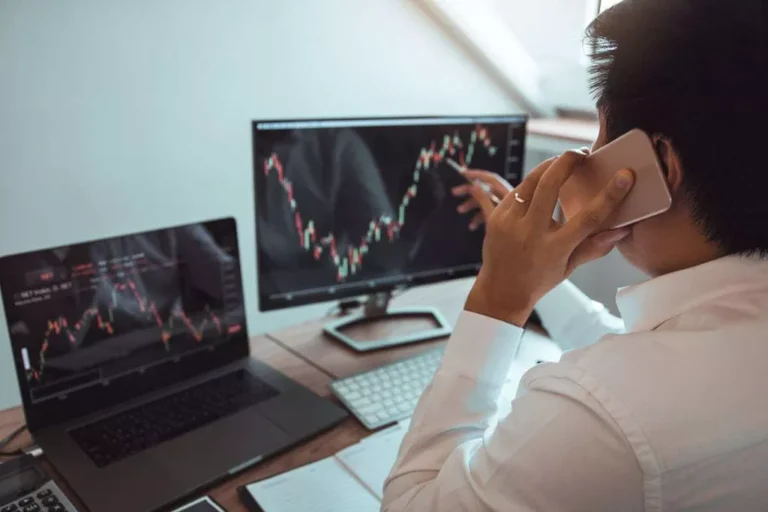Content
Market makers have several ways to hedge it, such as shorting an SPX futures how to choose liquidity provider contract or an ETF tracking this same index. The opposite is true in instances where a market maker is hedging against a long put option position. To hedge against potentially, sharp movements in the underlying asset of an option, liquidity providers may implement different hedging techniques. One of these is gamma, which effectively measures how quickly delta moves, and is often referred to as the second order effect of delta.
The Importance of Liquidity in ETF Trading
As other fund sponsors wanted to bring new ETFs to market, they had to obtain their own specific exemptive relief orders from the SEC. Until 2008, the SEC only approved exemptive relief orders for ETFs that tracked specified indexes. These ETFs, commonly referred to as index-based ETFs, are designed to track the performance of their designated indexes or, in some cases, a multiple or an inverse (or a multiple of an inverse) of their indexes. At year-end 2023, there were 1,872 index-based ETFs—with $7.4 trillion in total net assets—that were registered with the SEC under the Initial exchange offering Investment Company Act of 1940.
ETF Trading – How are ETFs typically traded?
Now, imagine a sudden event, like a lockdown, causing a surge in demand for shampoos. The distributor/manufacturer can’t meet this huge demand immediately (either due to funding issues https://www.xcritical.com/ or manufacturing bottlenecks) and delays the supply. Taking advantage of the shortage, the store owner might sell shampoos at Rs 110 (not at the original price of Rs 100), until the supply chain goes back to normal.
Market Markers Must Offset Directional Risks
Market makers are compensated for the risk of holding securities (that they make markets for) that may decline in value after they’re purchased from sellers and before they’re sold to buyers. Making a market signals a willingness to buy and sell the securities of a certain set of companies to broker-dealer firms that are members of an exchange. Information posted on IBKR Campus that is provided by third-parties does NOT constitute a recommendation that you should contract for the services of that third party. IMC partners with issuers and exchanges to design and support effective lead-market-maker programs that incentivize trading in newly issued products. All performance information is based on historical data and does not predict future returns.
- Whether an entity or individual, market makers are obligated to provide bids and offers for securities—that is, to make markets—so that markets retain some degree of liquidity and investors can continue to buy and sell.
- The subsequent website(s) may be governed by different privacy policies, terms and conditions, or regulatory restrictions.
- By performing these functions, ETF market makers help to ensure that investors can trade ETFs with confidence and that the market remains stable and efficient.
- Some of the largest facilitation trades in the ETF market are conducted with the use of a broker via OTC risk trading.
- In 2019, the SEC also granted separate approval through the exemptive relief process to five models of ETFs that did not fall under the new ETF rule because they do not fully disclose their portfolio holdings each day.
Chief Investment Officer & Founding Partner, ETF Capital Management.
With more than 25 years of industry experience in banking, securities, mutual funds and financial education, Kevin provides a rare combination of both industry knowledge and educational expertise on Exchange Traded Funds. During his career he has authored several investment industry courses for the Canadian Securities Institute (CSI), including ETF focused courses and Managed Accounts chapter of the CSC. Kevin frequently interacts with portfolio managers and investors about the benefits of ETFs and how they can be used to add value to any investment portfolio.
They will deliver back those ETF shares to the authorized participant or the market maker to flatten out the short position they had at the end at the end of the day. They have delivered the basket and they have flattened out their short position. This is a back-office function that happens once a day at the net asset value of the fund. The market maker will be pricing that ETF based on the fair value of the ETF, which is where they can sell the ETF and buy the underlying basket of securities.
He possesses product knowledge spanning across traditional and alternative investments. Mr. Rincon advises both institutional and wealth investors on ETF strategies, publishes a broad array of ETF publications, and works with TD’s ETF market making team in facilitating ETF orders. Andres joined TD Securities in 2008, first managing credit risk for the dealer, and later as a member of the Equity Derivatives division on the options sales desk. After four years leading equity derivatives sales and research in London, England, Andres moved back to Toronto. In 2016 Andres took on the task of expanding TD Securities’ ETF strategy platform. Jimmy Xu joined BMO Global Asset Management in September 2023 responsible for building and managing Liquid Alternatives investment solutions.

Sometimes, the same firm will serve as both an LMM and an AP based on its internal capabilities. Authorized participants (APs) are the capital market’s facilitators of the ETF creation and redemption process. This process is a key feature that distinguishes ETFs from their mutual fund counterparts. Understanding the role APs play is critical for anyone who wants to launch any type of ETF. Graham MacKenzie is the Head of Exchange Traded Products and leads the ETF and Structured Product businesses at the TMX.

Exchange Traded Fund (ETF) An ETF is an open-ended fund that provides exposure to underlying investment, usually an index. Like an individual stock, an ETF trades on an exchange throughout the day. Unlike mutual funds, ETFs can be sold short, purchased on margin and often have options chains attached to them. Portfolio managers manage the ETF portfolio, seeking to achieve the investment objective. Portfolio managers’ trading desks execute trades as directed by portfolio managers.
Market makers also play a critical role in the creation and redemption of ETF shares. When an investor wants to create or redeem ETF shares, the market maker acts as the counterparty, ensuring that the ETF shares are created or redeemed at the net asset value (NAV) of the underlying securities. Growing investor demand for optionality calls attention to how these markets function, including the role that market makers play, particularly with respect to the ETF structure. The liquidity that these large institutions provide gives investors access to public derivatives markets and confidence to trade in and out of exchange traded options. As a neutral party, market makers take a different stance to price moves in an option contract’s underlying assets while managing specific risks during the hedging processes. In this piece, we explain why it’s important to understand these dynamics from the market maker’s vantage point and the underlying plumbing in the exchange listed options market.
As noted above, market makers provide trading services for investors who participate in the securities market. Their activities through their entity trading accounts produce and boost liquidity within the markets. ETFs need to have at least one market maker before listing their product. Being the lead market maker on a product introduces additional risk for the market maker. They need to adhere to exchange rules and are required to always offer liquidity and pricing.
Exchanges give firms looking to market publicly listed securities the platform to do this. ETFs rely on arbitrage activities to keep the fund’s market price in line with its NAV. And so, when designing an index for an ETF to track, the product development team ensures the ETF basket is liquid enough to efficiently manage the fund from a liquidity perspective. This, in turn, allows market participants to effectively create/redeem ETF shares and keep prices in line with the NAV. Liquidity is one of the most important features attracting a diverse group of investors to exchange traded funds (ETFs).
Most foreign exchange trading firms are market makers, as are many banks. The foreign exchange market maker both buys foreign currency from clients and sells it to other clients. They derive income from the trading price differentials, helping the market by providing liquidity, reducing transaction costs, and facilitating trade. Mr. Gil’s experience includes specialized knowledge of exchange traded funds, market structure, market-making, arbitrage, direct market access (DMA), algorithmic trading, electronic connectivity and execution. He was instrumental in the launch and development of CIBC’s capital markets capabilities and client relationships in Latin America. Issuing an ETF requires working closely with market makers to price, provide liquidity, and fulfill orders for investors in the secondary market.
Important Risk Information There can be no assurance that a liquid market will be maintained for ETF shares. Whether you’re new to investing or a seasoned investor, our ETF Education Hub can help you discover how to evaluate ETFs, use them in a portfolio, and more. No fees apply to the submission of daily trading activity by Primary Dealers. Primary Dealers are required to submit an end of day file of trading activity in Irish Government bonds and treasury bills to Euronext Dublin.
When there are discrepancies between an ETF’s market price and the value of its underlying securities, trading can more closely align the ETF’s price and its underlying value. For example, if an ETF is trading at a discount to its underlying value, investors may buy ETF shares or sell the underlying securities, or both. Increased demand for the ETF’s shares should raise its price, and any sales of the underlying securities should lower their prices, narrowing the gap between the ETF and its underlying value.
